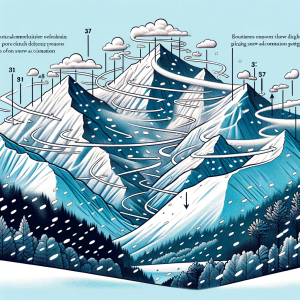
Demystifying Six Statistical Senses: A Guide for the Curious Mind
Statistics is more than just numbers and graphs; it’s a science that helps us make sense of the world around us. The article “Six Statistical Senses” published in Annual Reviews delves into how statistics as a discipline helps in connecting theory, methodology, and computation in insightful ways.
Understanding Statistical Senses
The concept of statistical senses comes from the recognition of certain categories or “senses” that are crucial in understanding and using statistics effectively. These aren’t physical senses like sight or smell but are metaphorical, helping us grasp the vast landscape of statistical theory and application.
What is Statistical Sentience?
Statistics emerged from the need to understand data from a mathematical and empirical viewpoint. As the article points out, this field has developed its character, complete with unique features, principles, and tools that define its identity. Each of the six statistical senses contributes to what the authors call “statistical sentience” — an advanced level of awareness and understanding in handling statistical challenges.
Exploring the Six Senses
Let’s break down these senses for a clearer understanding:
Selective Hearing: Informative Ignorance
In statistics, “selective hearing” refers to focusing on the most relevant aspects of data while ignoring less critical details. It’s about extracting meaningful information from a sea of data and recognizing what to tune out.
Smell: Detecting Subtleties
The “smell” in statistics involves detecting when a problem or a solution is more complex than it appears. It’s about sensing the need to introduce randomness or complexity to get to the core of a problem.
Enhanced Vision: Seeing the Unseen
This sense is about looking beyond the obvious and considering the missing or unseen data, also known as “dark data.” It’s a crucial skill in understanding what isn’t directly observable but significantly impacts the analysis.
Magic Touch: The Art of Improvement
This involves principles and insights that transform ordinary estimations into extraordinary ones. It’s like having a “magic touch” that refines and improves statistical methods and outcomes.
Let’s take a Springsteen interlude
Just a Taste: The Richness of Frugality
Here, the idea is that even a small sample of data can provide rich insights. Techniques like the bootstrap method showcase how statisticians make the most out of limited data.
The Sixth Sense: Qualitative Leap
This refers to the ability to go beyond the obvious, to innovate and create new methods or solutions. It’s about daring to take the path less trodden in the statistical world.
Why These Senses Matter
The article doesn’t just list these senses; it explains their importance in the real world. From making sense of pandemic data to understanding consumer behavior, statistical senses help in various domains. They aren’t just academic concepts; they’re tools for decision-making, predicting future trends, and much more.
Building Statistical Phronesis
The journey through the six statistical senses is about building what the authors call “statistical phronesis” – a deep, practical wisdom in statistics. It’s about not just knowing statistical methods but understanding when and how to apply them effectively.
By exploring these senses, we can appreciate the depth and utility of statistics in our daily lives and encourage a more informed and critical approach to the data that surrounds us.
Explore, Learn, and Grow with Science:
Step into the realm of discovery with ‘This Week in Science’! Tailored for both educators and science enthusiasts, our newsletter offers a weekly exploration of groundbreaking research and inspiring stories from the scientific community. By subscribing, you’re not just reading – you’re expanding your horizons in teaching and learning. Join us for free and start a journey that reshapes your engagement with science, fostering a more informed and passionate approach.



